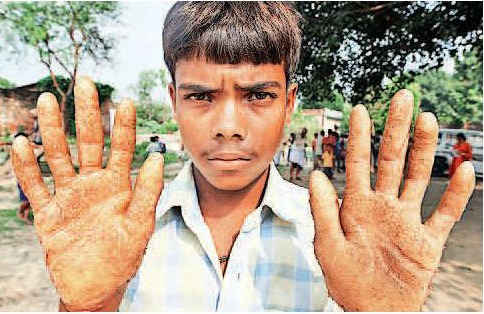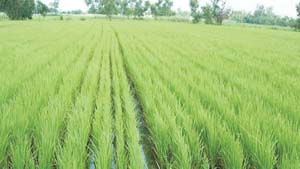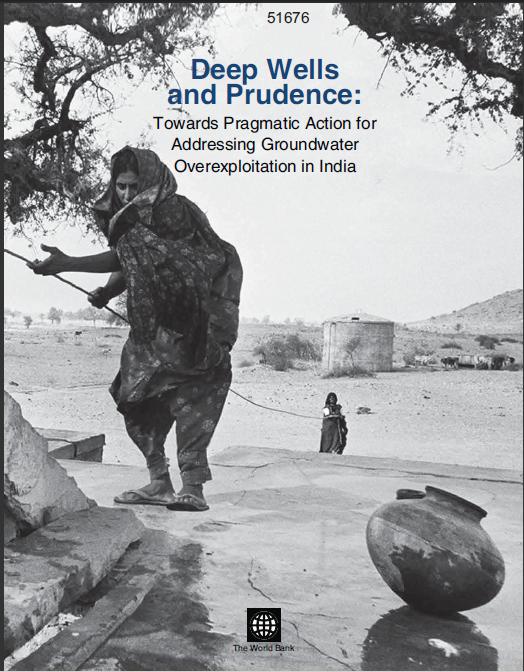Avadh Plains
A village becomes water rich
Posted on 26 May, 2017 05:05 PMLocated in Uttar Pradesh’s Baghpat district, with vast agricultural fields growing sugarcane, rice, wheat, jowar, chana and all kinds of seasonal vegetables, Dhikoli in Pilana tehsil comes across as a bustling and prosperous village.

Genocide by indifference
Posted on 07 Jul, 2014 03:40 PMThe Ramganga has many impediments in the course of its 655 kilometer stretch from its origin in the mountains of Uttarakhand to its confluence with the Ganga in Uttar Pradesh. In addition to the Kalagarh Dam, there are already two barrages along its length and now a third one is coming up a few kilometers from Bareilly.

Can we build an alternative society?
Posted on 17 Nov, 2013 10:11 PMRiverside apartments are in great demand these days. This has led to a surge in the number of apartments built along rivers that flow through urban areas. These same 'premium' apartments are encroaching on the river's channel and are therefore most vulnerable to the floods that they help create by constricting the river. This harm extends beyond the apartments in question.

A tale of two STPs
Posted on 20 Sep, 2013 04:51 PMThe venerable Imperial Gazetteer says, 'Viewed from a distance Lucknow presents a picture of unusual magnificence and architectural splendour, which fades on nearer view ...' (Imperial Gazetteer of India, v. 16, p. 196).

Investigation and assessment report: Arsenic in drinking water sources and related problems of Ballia district of Uttar Pradesh
Posted on 28 Dec, 2011 11:03 AMFollowing media reports about arsenic contamination in Ballia, and a complaint addressed by the people of Ballia to the Ministry of Rural Development, a National Level Monitor was requested to enquire into the issue of water quality.

Encephalitis deaths in India - The same story of poverty, neglect, disaster and disease, how long will this continue ?
Posted on 02 Dec, 2011 10:15 AMGuest post by : Aarti Kelkar-Khambete
Zero tillage in the rice-wheat systems of the Indo-Gangetic plains - A review of impacts and sustainability implications by IFPRI
Posted on 31 Oct, 2011 06:49 PM This paper by the International Food Policy Research Institute (IFPRI) reviews the success of zero-tillage wheat in the rice-wheat systems of the Indo-Gange
This paper by the International Food Policy Research Institute (IFPRI) reviews the success of zero-tillage wheat in the rice-wheat systems of the Indo-Gange
Deep wells and prudence - Towards pragmatic action for addressing groundwater overexploitation in India - A World Bank document (2010)
Posted on 12 Apr, 2011 01:51 AM India is the largest user of groundwater resources in the world. It is estimated that approximately 230 cubic kilometers per year is used annually, this is more than a quarter of the total world consumption from this resource.
India is the largest user of groundwater resources in the world. It is estimated that approximately 230 cubic kilometers per year is used annually, this is more than a quarter of the total world consumption from this resource.
It is in this context that this World Bank report looks at the reasons for this quantum of groundwater usage.
The report delves into socio-economic and political reasons and looks at policies which inadvertently promote so much extraction. The report also analyses various attempts to manage this resource. These attempts range from government and international agency efforts directed to grassroots mobilisations. Finally the report comes out with suggestions to deal with this crisis.
Remote sensing and census based assessment and scope for improvement of rice and wheat water productivity in the Indo-Gangetic basin - A working paper by Challenge Program on Water and Food
Posted on 22 Aug, 2010 04:48 PMThis paper by the Challenge Programme for Water and Food (CPWF) presents a simplified approach to combine remote sensing, census and weather data to analyze basin rice and wheat water productivity (WP) in Indo-Gangetic river basin, South Asia. It presents an innovative approach to combine meteorological data, ground survey, national census with remotely sensed imagery to assess water use, yield, and finally crop water productivity for the Indo-Gangetic rice-wheat cropping system in South Asia.
Assessing and improving water productivity in conservation agriculture systems in the Indus-Gangetic basin – A working paper by Challenge Program on Water and Food
Posted on 22 Aug, 2010 02:38 PMThe paper by Challenge Programme on Water and Food (CPWF) attempts to assess and improve water productivity in conservation agriculture systems in the Indus-Gangetic basin, in which during the past 40 years an intricate mosaic of interactions between man & nature, poverty & prosperity and problems & possibilities has emerged. Rapid expansion in agricultural water use is a common theme across these interactions and access to water is central to the livelihoods of the rural poor.